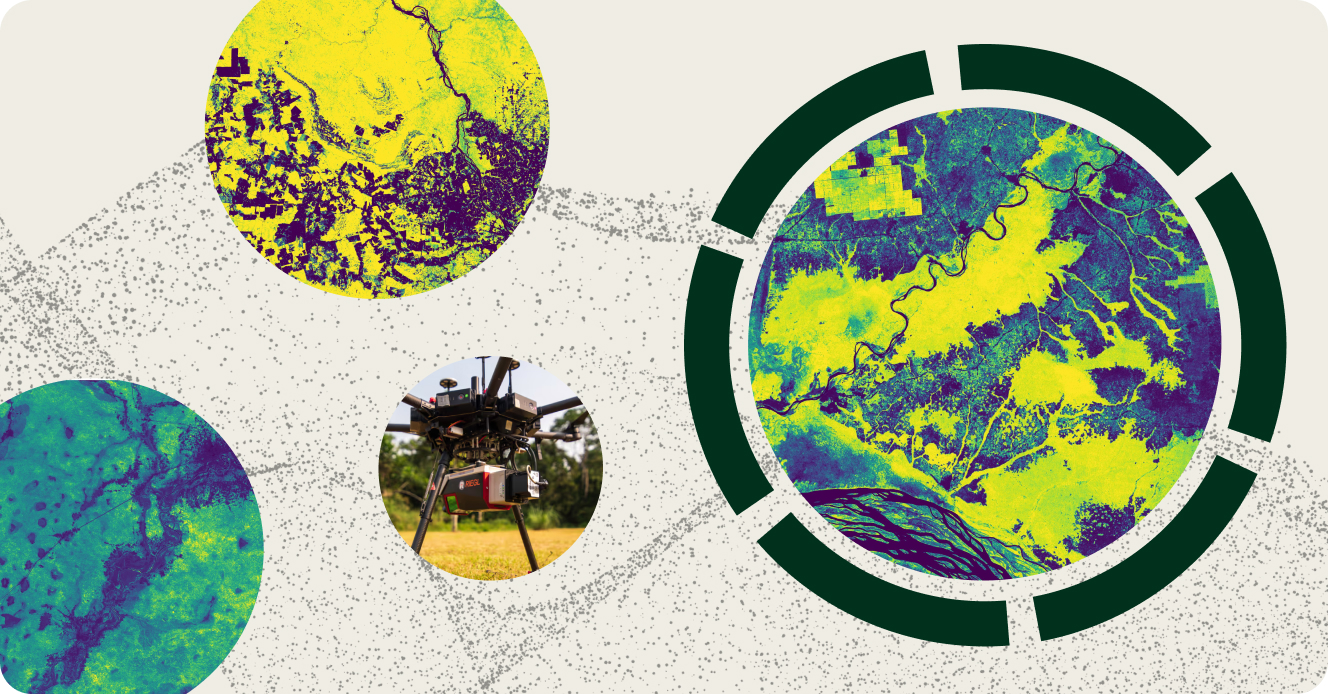"Ao longo dos anos, investimos significativamente em nossa equipe de dados de campo, com foco na produção de classificações confiáveis. Embora isso garanta a precisão de nossas classificações, não permite a escala dos milhares de projetos que os compradores estão considerando."
Para obter mais informações sobre as tendências de aquisição de créditos de carbono, leia nosso artigo"Key Takeaways for 2025". Compartilhamos cinco dicas baseadas em dados para aprimorar sua estratégia de aquisição.

Mais uma coisa: os clientes do Connect to Supply também têm acesso ao restante das ferramentas da Sylvera. Isso significa que você pode ver facilmente as classificações dos projetos e avaliar os pontos fortes de um projeto individual, adquirir créditos de carbono de qualidade e até mesmo monitorar a atividade do projeto (especialmente se você investiu no estágio de pré-emissão).
Agende uma demonstração gratuita do Sylvera para ver os recursos de compras e relatórios da nossa plataforma em ação.
As pessoas que entrevistamos são de diversas origens e suas áreas de especialização e responsabilidade são igualmente diversas. Aprendemos muito com eles nessas conversas e estamos animados para acompanhar seu progresso.
P: Olá! Conte-nos um pouco sobre o que você faz na Planet.
R: Sou Diretor de Programas Florestais da Planet, a maior rede de satélites de observação da Terra que fornece imagens e percepções globais e diárias por satélite. Supervisiono a estratégia, as parcerias e as iniciativas de pesquisa e desenvolvimento da Planet, que se somam à nossa meta de revolucionar a capacidade do mundo de monitorar as florestas globais hoje - e de contabilizar o valor das florestas na economia global amanhã.
No dia a dia, lidero nossos programas e estratégias de Florestas e Uso da Terra. Tento descobrir como podemos criar produtos de dados que resolvam os desafios relacionados ao uso insustentável da terra para governos, mercados, commodities e institutos financeiros. Também trabalho em estreita colaboração com as equipes comerciais e de produtos para conectá-las. O Planet me dá a oportunidade de criar produtos de dados que informam produtos e decisões financeiras.
P: Você pode nos contar um pouco mais sobre sua formação e por que escolheu trabalhar nesse espaço?
R: Sempre achei muito interessante a natureza sistêmica das ciências ambientais. Na faculdade, fiz um estágio na zona rural da Nicarágua, o que acabou sendo um verdadeiro momento de aprendizado. Daquele momento em diante, não consegui mais pensar no meio ambiente como algo separado do desenvolvimento econômico. Para mim, não faz sentido definir o desenvolvimento como algo que prejudica o meio ambiente.
Depois disso, passei algum tempo trabalhando na área acadêmica e de pesquisa. Depois, eu queria algo mais aplicado. Queria descobrir como valorizar o sequestro climático proporcionado pelas florestas, para que pudéssemos entender como protegê-las.
P: Quais habilidades você acha que são particularmente vitais para a sua função e equipe?
R: A Planet faz um trabalho muito interdisciplinar. É importante ter uma compreensão da ciência ambiental e da economia e de como elas estão interligadas. Acho que as mulheres geralmente são excelentes administradoras e agentes interdisciplinares.
Também tenho experiência em sensoriamento remoto. Concentrei-me em Análise Geoespacial, o que me permite entender como os produtos de dados podem ser usados para medir florestas. Além disso, meu conhecimento técnico me ajuda a traduzir as aplicações da tecnologia em diferentes produtos e soluções.
P: Quem são alguns de seus modelos ou colegas que você admira?
R: Minha mãe. Ela é muito esforçada e foi juíza. Na verdade, ela foi uma das primeiras mulheres a fazer as coisas que fazia, e agora tenho um apreço muito maior por isso.
P: Quais são alguns dos desafios e oportunidades relacionados ao seu trabalho?
R: "Não se pode consertar o que não se vê" é um mantra na Planet. A oportunidade é que estamos começando a conseguir ver as externalidades que antes não conseguíamos contabilizar. Agora podemos fazer um trabalho melhor para realmente ver e medir o CO2 na terra.
O desafio que enfrentamos é a capacidade de usar essas ferramentas e garantir que o acesso seja igual para todas as partes interessadas. Temos um comitê de ética que analisa os casos de uso e nos dedicamos a trazer transparência para todos os lados.
P: Quais são algumas das tendências que você está observando no espaço da sustentabilidade?
R: Estou vendo cada vez mais mulheres da geração mais jovem se juntando a nós. Isso é ótimo porque precisamos de um pensamento mais interdisciplinar para resolver esses problemas.
Outra tendência é que os insights geoespaciais estão se tornando relevantes para um novo público. Durante muito tempo, o sensoriamento remoto ficou no domínio dos governos (porque é grande e caro) ou dos cientistas. Mas hoje existe a Planet e muitas outras empresas que estão criando novas maneiras de fazer o sensoriamento remoto baseado no espaço, e isso está se tornando mais prático. Portanto, agora diferentes setores podem se beneficiar disso, pois está se tornando mais prático e econômico. Por exemplo, o setor financeiro está começando a analisar seriamente os dados geoespaciais para avaliação de riscos ambientais.
Há também uma revolução paralela na computação em nuvem que nos permite dar sentido às informações que estamos coletando.
P: Alguma palavra final para as pessoas que estão pensando em seguir uma carreira em tecnologia climática?
R: Precisamos de todas as mãos no convés! Temos 8 anos para virar esse barco. Precisamos de pessoas de todas as origens e devemos ver os desafios por meio de uma lente interdisciplinar. Junte-se à nossa equipe e ajude-nos a transformar a nova e incrível capacidade de observação da Terra em produtos úteis.





.avif)









